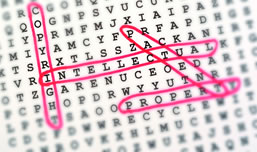Research, development and collaboration agreements
Research, development and collaboration agreements take a wide variety of forms, including:
- collaborations between commercial and academic organisations;
- collaborations between commercial organisations; and
- European FP7 Framework consortium agreements.
The common theme to these agreements is two or more organisations working together to advance one or more of their existing technologies, or to combine their technologies to produce something new. These agreements range from simple documents to very complex arrangements. This article takes an overview of some of the key issues that the parties to a collaboration agreement should consider.
Intellectual Property
The most contentious aspects of research, development and commercialisation agreements often relate to intellectual property ownership and exploitation. There is no one-size-fits-all approach to intellectual property ownership and exploitation and the concerns and goals of the parties in each situation are unique.
 Pre-existing Intellectual Property
Pre-existing Intellectual Property
Pre-existing intellectual property is often referred to as Background Intellectual Property.
It is often necessary for one party to grant to the other a licence under Background Intellectual Property to enable the other party to conduct the research and development work. If both parties are doing research and development work, cross licences may be necessary.
It is useful to consider how valuable and sensitive the Background Intellectual Property is and whether there should be any specific restrictions relating to its use or disclosure. The parties may also wish to consider whether provisions similar to those found in a Material Transfer Agreement may be necessary or desirable.
New Intellectual Property
New intellectual property arising out of the research and development work is often referred to as Foreground Intellectual Property.
The default legal position - if there are no provisions in the agreement dealing with intellectual property - is that a party will individually own the Foreground Intellectual Property that it solely creates, and the parties will jointly own the Foreground Intellectual Property that is jointly created.
At first blush, this appears to be a simple and appropriate approach to intellectual property ownership. However, this position can have a variety of undesirable consequences, for example:
 If one party provided most of the initial technology but the other party did most of the work, the first party will own the Background Intellectual Property relating to the technology and the second party will own the Foreground Intellectual Property relating to the same technology. The first party will want to control any patents relating to Foreground Intellectual Property because those patents relate to valuable developments of its initial technology. However, those patents will be owned and controlled by the second party and could be assigned or licensed to a competitor of the first party.
If one party provided most of the initial technology but the other party did most of the work, the first party will own the Background Intellectual Property relating to the technology and the second party will own the Foreground Intellectual Property relating to the same technology. The first party will want to control any patents relating to Foreground Intellectual Property because those patents relate to valuable developments of its initial technology. However, those patents will be owned and controlled by the second party and could be assigned or licensed to a competitor of the first party.- If an invention is jointly owned, who will take responsibility for and pay for patents covering the jointly-owned invention? What if one party doesn't want to file and pay for a patent but the other party does?
- Under English law, joint owners of a patent are permitted to use the patented invention themselves but – in the absence of any agreement to the contrary - are not permitted to allow third parties to use it or to assign their share to a third party.
Co-ownership of intellectual property should be avoided as a “default solution” in a collaboration context unless the consequences of that co-ownership have been carefully considered and an agreed position documented in relation to the prosecution, maintenance, exploitation and enforcement of that intellectual property. There are a wide variety of creative approaches to intellectual property ownership and use, and it is useful to take the time to explore these before entering into a partnership.
Confidentiality and Publication
It is important to ensure that the confidentiality provisions correspond to the intellectual property provisions. A common oversight is for the parties to negotiate carefully the intellectual property provisions but assume that the confidentiality provisions are "standard" and fail to amend them accordingly.
 An issue that will almost always arise when collaborating with an academic institution is that the institution will require the right to publish the results of the collaboration. Many academic institutions are charities and in order to maintain their charitable status, and enjoy the associated tax benefits, they must ensure that their activities are for the public benefit. Guidance from the Charities Commission provides that, for collaborative research to be justified as a charitable activity, the institution needs the right to publish the results "within the appropriate academic time frame". This means that institutions will usually agree to delay publication of results for up to six months from the date of completion of the research. Any longer delay will be strongly resisted by the institution as it puts the institution under a greater burden of proof to show that the delay is reasonable.
An issue that will almost always arise when collaborating with an academic institution is that the institution will require the right to publish the results of the collaboration. Many academic institutions are charities and in order to maintain their charitable status, and enjoy the associated tax benefits, they must ensure that their activities are for the public benefit. Guidance from the Charities Commission provides that, for collaborative research to be justified as a charitable activity, the institution needs the right to publish the results "within the appropriate academic time frame". This means that institutions will usually agree to delay publication of results for up to six months from the date of completion of the research. Any longer delay will be strongly resisted by the institution as it puts the institution under a greater burden of proof to show that the delay is reasonable.
Other matters to be aware of:
- Competition law – a research, development and collaboration agreement is a "horizontal agreement" within the scope of European and UK competition law. Care should be taken to ensure that these agreements are drafted to comply with this legislation.
- Sub-contracting – if one of the parties does not have the expertise to do all of the work that they are obliged to do under the contract, they may wish to sub-contract the work. It is useful to consider whether the parties are happy for their Background Intellectual Property to be disclosed to, and used by, sub-contractors;
- Agreeing to enter into a further contract at a later date – it is common that the parties wish to wait and see what the results of the research will be before they agree on how they will each be permitted to use the Foreground Intellectual Property. They may agree to "enter into good faith negotiations to reach agreement on the use of the Foreground Intellectual Property", or something similar. Under English law, an "agreement to agree" such as this is not legally binding unless certain additional conditions are met. Ideally, the parties should set out the full terms of their relationship early on.
If you have any questions on this article or would like to propose a subject to be addressed by Synapse please contact us.


"It is important to ensure that the confidentiality provisions correspond to the intellectual property provisions. A common oversight is for the parties to negotiate carefully the intellectual property provisions but assume that the confidentiality provisions are "standard" and fail to amend them accordingly."

